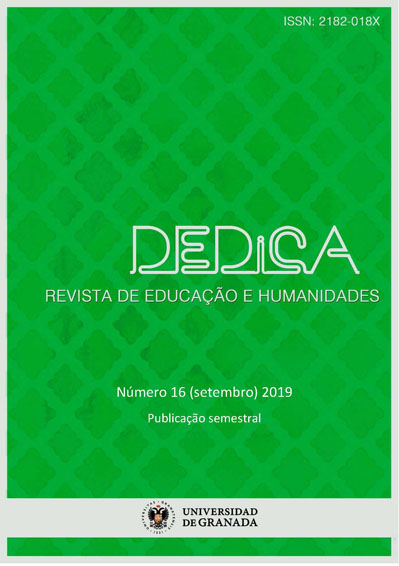Musical analysis in the tests of access to Higher Education Studies of Clarinet
DOI:
https://doi.org/10.30827/dreh.v0i16.8366Keywords:
clarinet, Musical analysis, Higher Education Conservatory of Music, Professional EducationAbstract
The Musical Analysis’ test is one of the first exams to be taken to access the Higher Education Conservatories of Music in Spain. Students usually have problems to overcome it due to the extension of the required syllabus, which ranges from Gregorian Chant to Romanticism, having to master a wide range of musical forms (Suite, Fuga, Sonata, etc.). The demands of the test are reflected in the results of the students, obtaining a high percentage of failures or low grades, as confirmed by the data obtained in the different centers which were analyzed. Faced with this situation, it was considered important to initiate the students in the preparation of this specific test from the beginning of their Professional Education, taking as reference the specific works for an instrument (in this case, Clarinet), which, at the same time, would have repercussions in a more correct interpretation. The data obtained previously to this investigation show that the saturation of teaching hours and of interpretative study suppose a handicap for the students at the time of preparing this specific test. As for the data obtained from the teachers of the conservatories of Murcia and Alicante (Vega Baja), they show the need to prepare this test from the Professional Education, insisting on taking Clarinet's works as reference. Attending this, a specific methodology was proposed to work the Musical Analysis in the Clarinet classroom, especially in the last cycle of Professional Education, although equally valid for the previous ones. The results obtained with the participating students showed that many of them obtained better grades in this exam that was part of the entrance exams of different Superior Conservatories of Music.
Downloads
References
Bas, L. (1981). Tratado de la forma musical. Buenos Aires: Ricordi.
Bennett, R. (1998). Investigando los estilos musicales. Madrid: Akal.
Besseler, H. (1986). Dos épocas de la historia de la música: ArsAntiqua – Ars Nova. Barcelona: Los libros de la frontera.
Blanquer, A. (1989). Análisis de la forma musical. Valencia: Piles, Editorial de Música.
Grout, D. J.; Palisca, C. V. (1990). Historia de la Música occidental I y II. Madrid: Alianza.
Kühn, C. (1992). Tratado de la forma musical. Barcelona: Labor.
LaRue, J. (1990). Análisis del Estilo Musical. Barcelona: Labor.
Llacer Pla, F. (1982). Guía analítica de formas musicales para estudiantes. Madrid: Real Musical.
Michels, U. (1991). Atlas de la Música I y II. Madrid: Alianza.
Ministerio de Educación y Ciencia (1966). Decreto 2618/1966, de
de septiembre, sobre Reglamentación general de los Conservatorios de Música. BOE (24/10/1966), nº 254, pp. 13381-13387.
Ministerio de Educación y Ciencia (1992). Real Decreto 756/1992, de 26 de junio, por el que se establece los aspectos básicos del currículo de los grados elementales y medio de la Enseñanzas de Música y el acceso a dichos grados. BOE. Núm. 206, jueves 27 de agosto 1992. 29781 – 29800.
Ministerio de Educación y Ciencia (1995). Real Decreto 617/1995, de 21 de abril, por el que se establece los aspectos básicos del currículo del grado superior de las enseñanzas de Música y se regula la prueba de acceso a estos estudios. BOE (06/06/1995), nº134, referencia 13594, pp. 16607-16631.
Ministerio de Educación y Ciencia (2006). Real Decreto 1577/2006, de 22 de diciembre, por el que se fijan los aspectos básicos del currículo de las enseñanzas artísticas y acceso a dichos grados de música reguladas por la Ley Orgánica 2/2006, de 3 de mayo, de Educación. BOE (20/01/2006), nº18, referencia 1221, pp. 2853-2900.
Ministerio de Educación y Ciencia (2013). Ley Orgánica 8/2013, de 9 de diciembre, para la mejora de la calidad educativa. Se establece los estudios de enseñanzas artísticas y acceso a dichos grados. BOE núm. 295. Martes 10 de diciembre de 2013. Sec. I. Pág. 97858-97921.A
Moore, D. (1981). Guía de los estilos musicales. Madrid: Taurus.
Pérez, M. (2002). El Universo de la Música. Madrid: Musicalis, S. A.
Piston, W. (1991). Armonía. Barcelona: Labor.
Rosen, Ch. (1987). Formas Sonata. Barcelona: Labor.
Zamacois, J. (1985). Curso de Formas Musicales. Barcelona: Labor.












